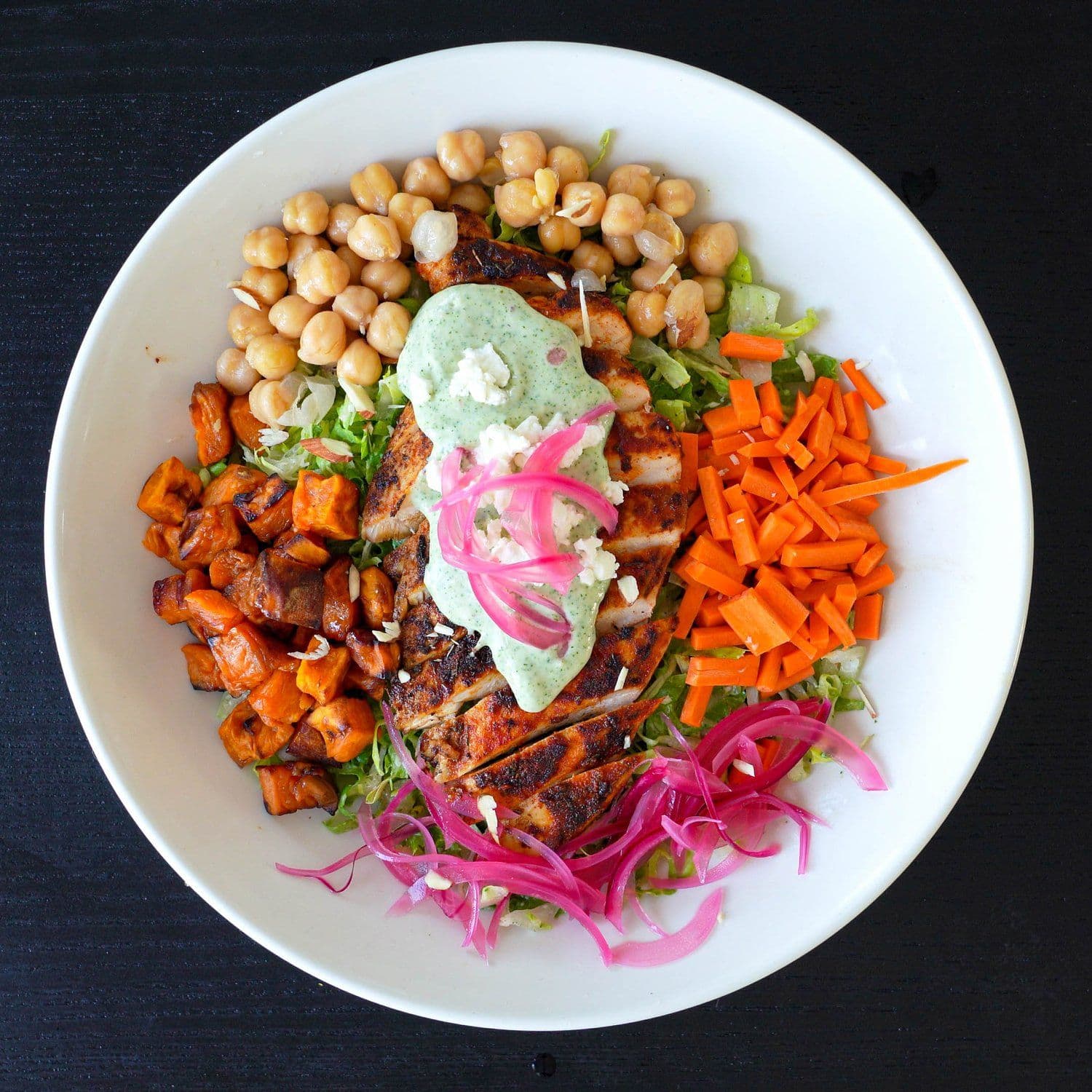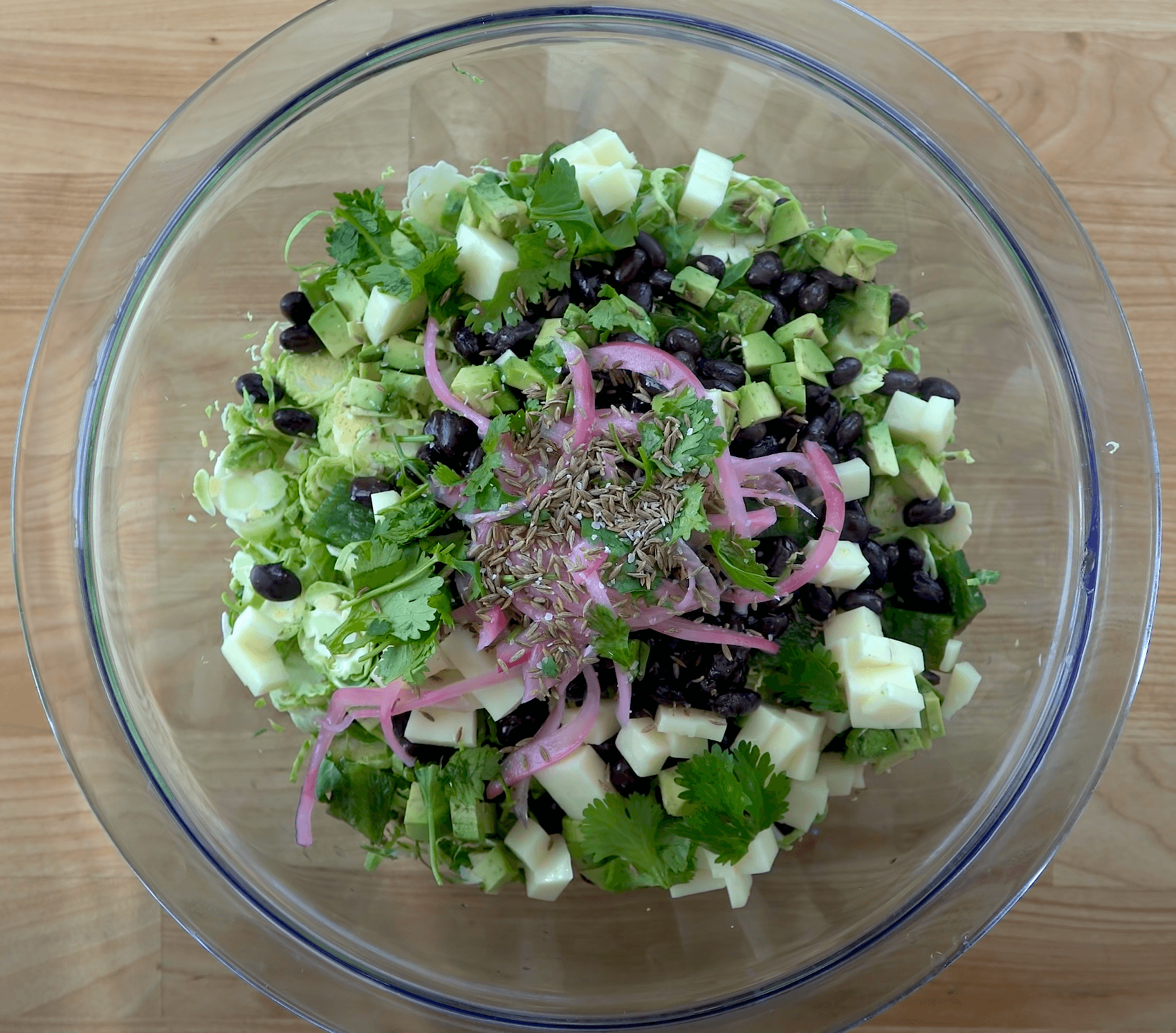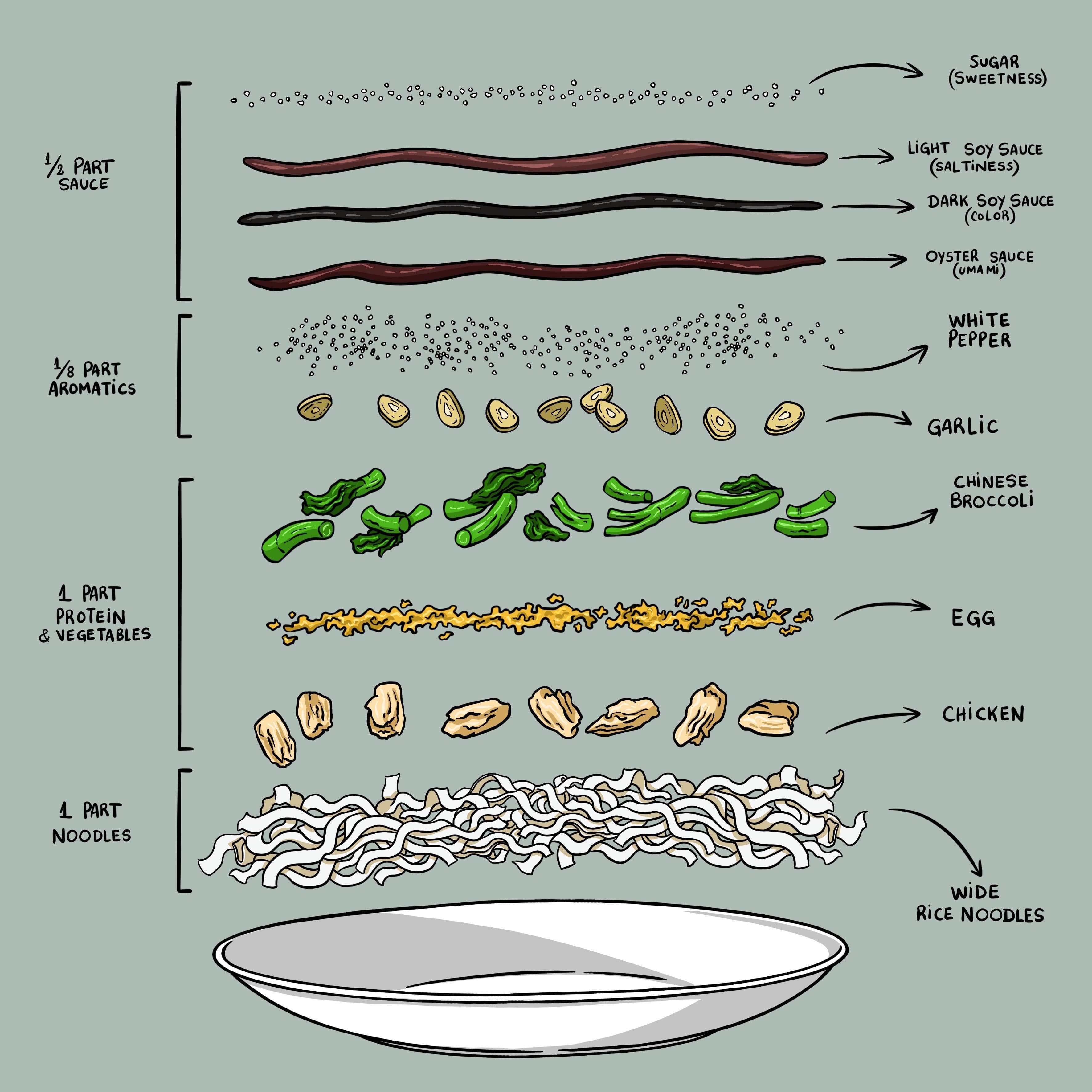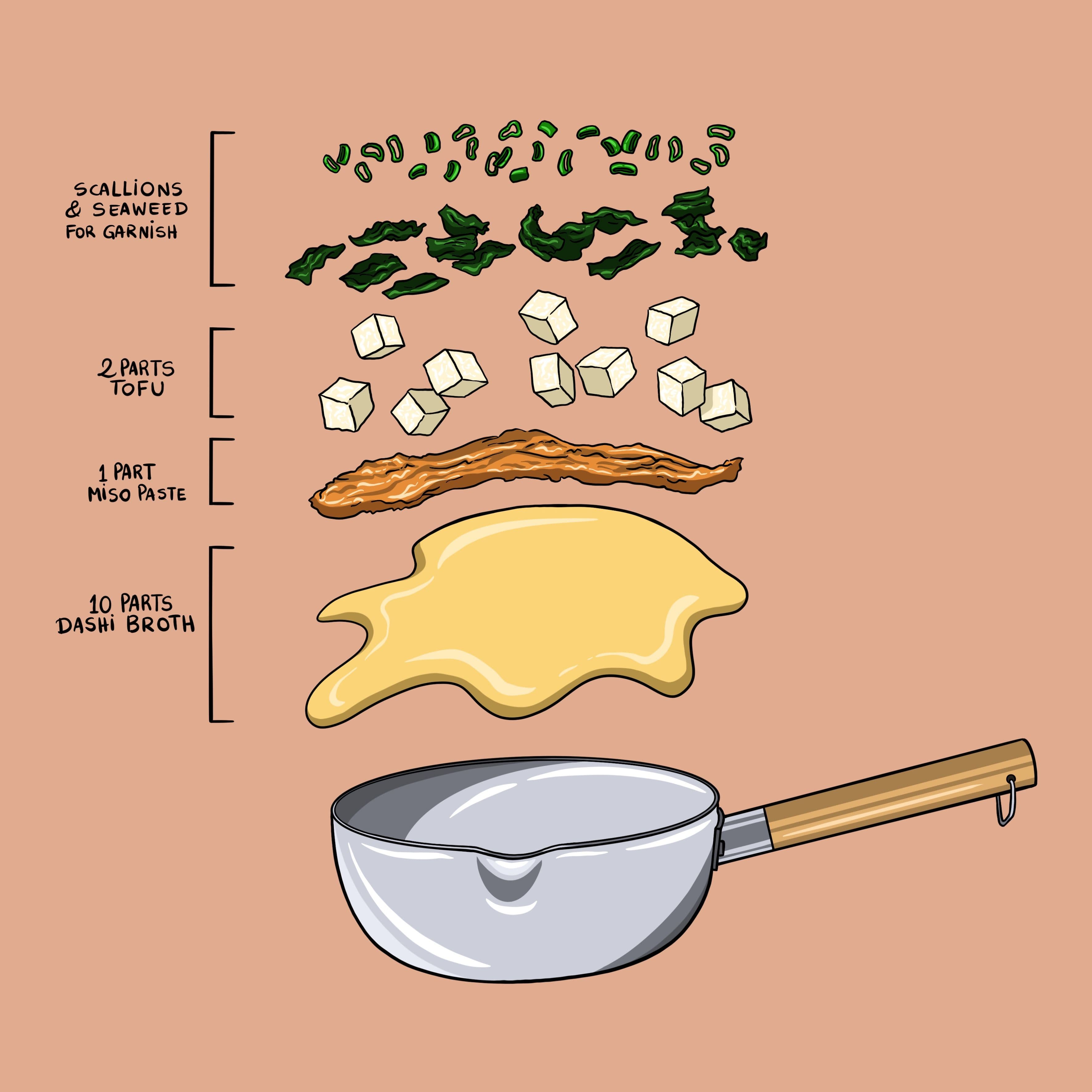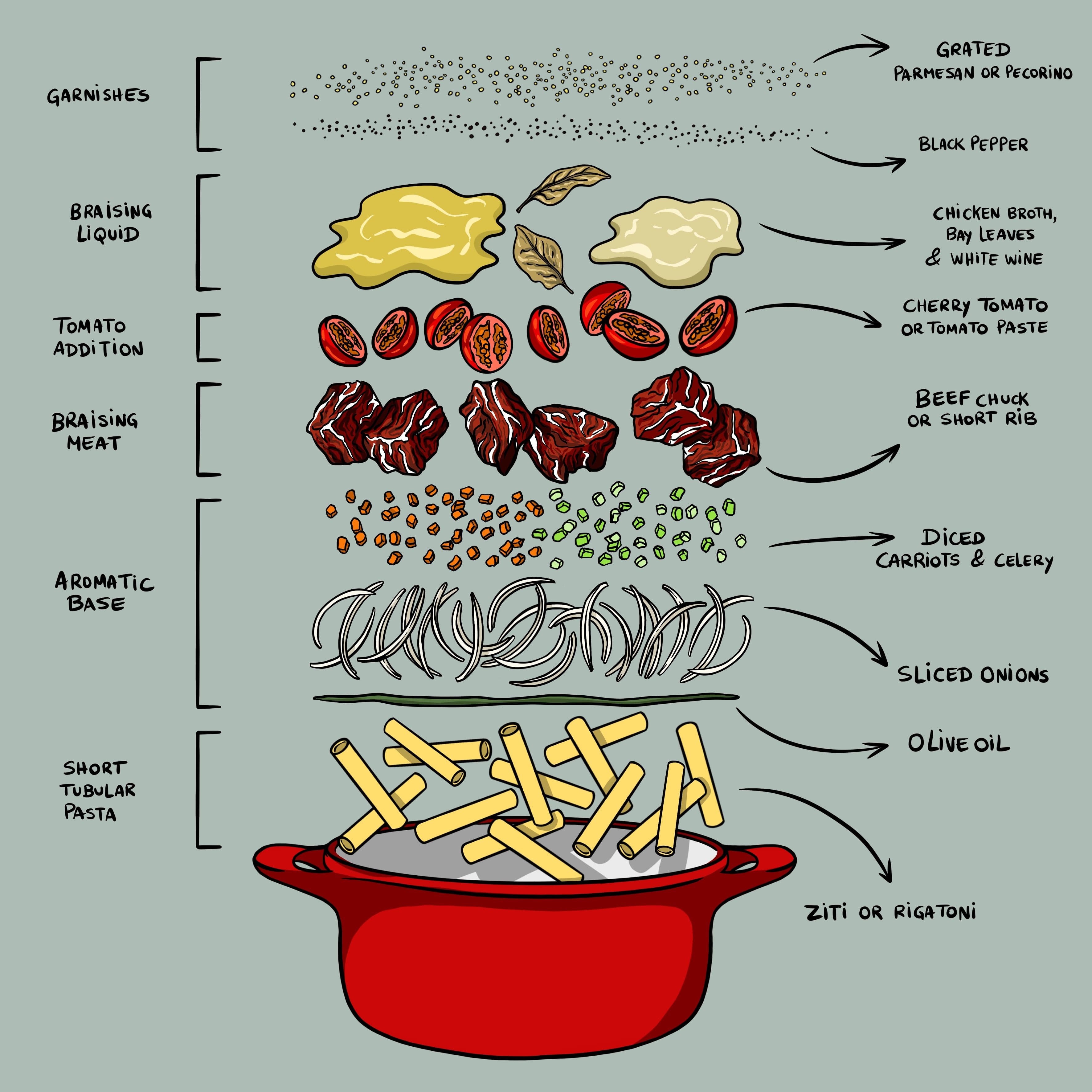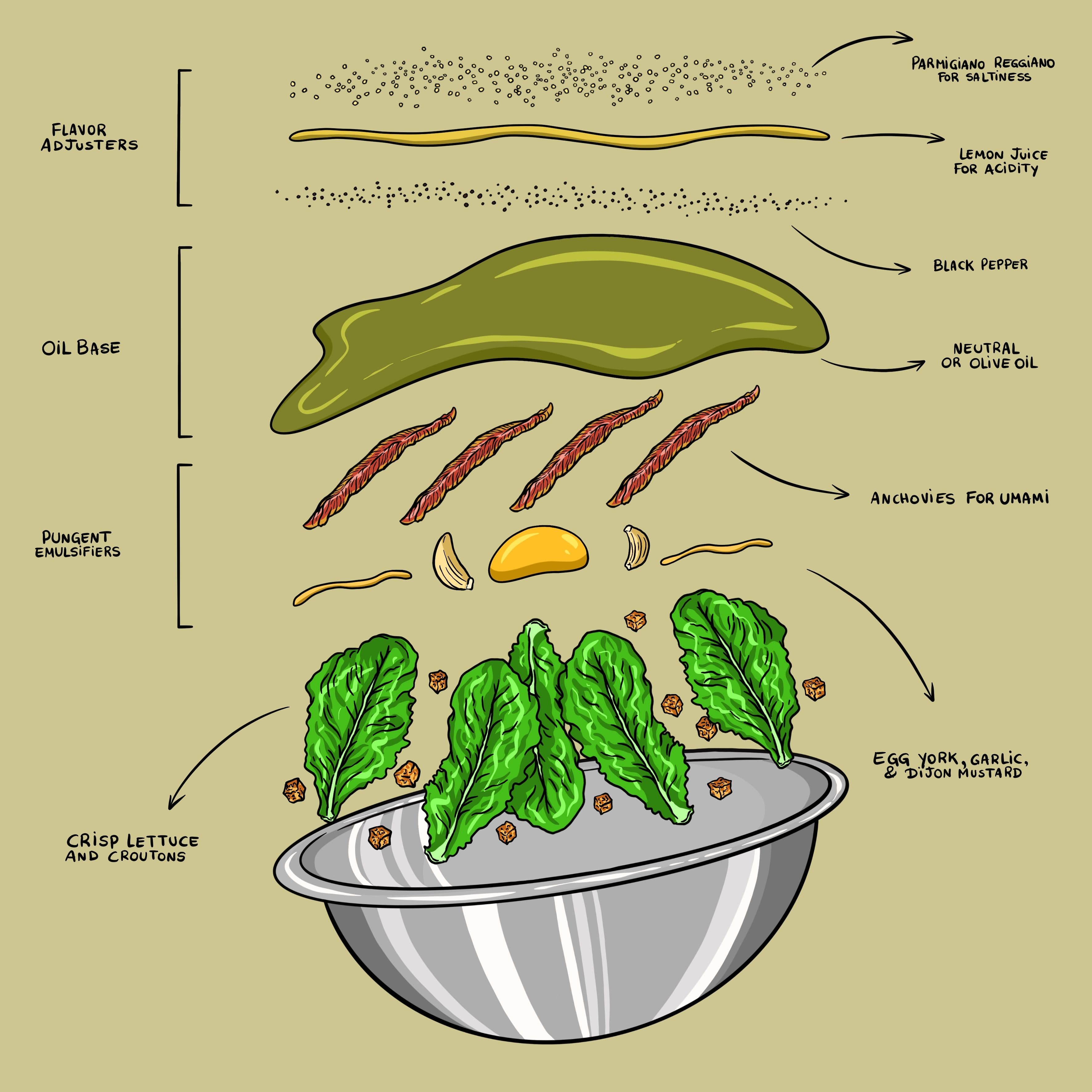
Caesar Salad
If you’ve never scratch-made Caesar salad, it's easier than you might think, especially once you understand the dressing framework.
 By Keith McBrayer
By Keith McBrayerThis recipe framework first appeared in The Mouthful, our weekly food newsletter for the curious home cook.
Caesar can be so much more than a salad dressing. Think of it more as a creamy condiment: make extra and use it on sandwiches, wraps, rice bowls, or as a flavored mayo-marinade.

Keith McBrayer
Ingredients
Dressing
- egg yolks1
- anchovies3-4
- garlic1-2 cloves
- dijon mustard1 spoonful15 g
- lemon juice1/2 lemon
- parmigiano reggiano2 spoonfuls15 g
- neutral oilas needed150 g
- black pepperto taste
- saltto taste
Salad components
- romaine lettuce, chopped or torn
- parmigiano reggiano, shaved or gratedfor garnish
- black pepperfor garnish
Extra topping options
- croutons
- bacon, bits
- shallots, fried
- chicken breasts, cooked and sliced
- anchovies, leftover
Method
Step 1: Prep & start the dressing
Clean & dry the lettuce you will be using. If you have the time, tear the lettuce into large bite-sized pieces instead of chopping it.
- Lettuce tears easily along its cell walls, but can bruise and oxidize along cut lines if you use a knife. Tearing also gets you slightly irregular pieces for a more natural texture and eating experience.
Start the pungent base. In a blender or food processor, puree together egg, anchovies, garlic, mustard, lemon juice, and parmesan until smooth.
Step 2: Emulsify the dressing
Slowly drizzle in the oil while blending, starting with a very small stream and gradually increasing the flow as an forms. Pause frequently and check that the oil is fully incorporated into the mixture — the dressing should be smooth and creamy and thicken as you add more oil.
- Continue blending in oil until the desired consistency is reached. If it gets too thick, you can thin it out with water or lemon juice.
- It’s hard to say exactly how much oil you will need because it depends on the emulsion power of your base. Keep blending in oil until the dressing is creamy, viscous, and lighter in color. Don’t hold back — you can always thin it back with a splash of water if you go too far into mayo-thickness-territory.
Add freshly cracked black pepper, and salt if needed (taste it first — many of the ingredients are naturally salty already). Add more lemon juice if extra acidity is needed.
- This will make enough dressing for multiple servings/heads of lettuce. Keep extra in a sealed container in the fridge.
Note: If your emulsion breaks (you’ll know — it’ll separate into a greasy mess) you added too much oil too quickly. You can save it by emptying the blender into another vessel, start with one more egg yolk and a bit of lemon juice in the blender. Slowly drizzle the broken dressing into the running blender until it properly emulsifies.
Step 3: Assemble the salad
Toss your choice of prepared lettuce and toppings with enough dressing to coat everything. Garnish with plenty of black pepper and grated parmesan. Enjoy.
FAQ
Also Appears In

Free Spice Guide
Join The Mouthful Newsletter to receive our essential spices list pdf.
Just subscribe to our weekly newsletter where 60,000+ readers get lifestyle protocols, recipe frameworks, Q&A from expert home cooks, and cooking trends explained.
We hate spam too. Unsubscribe anytime.

